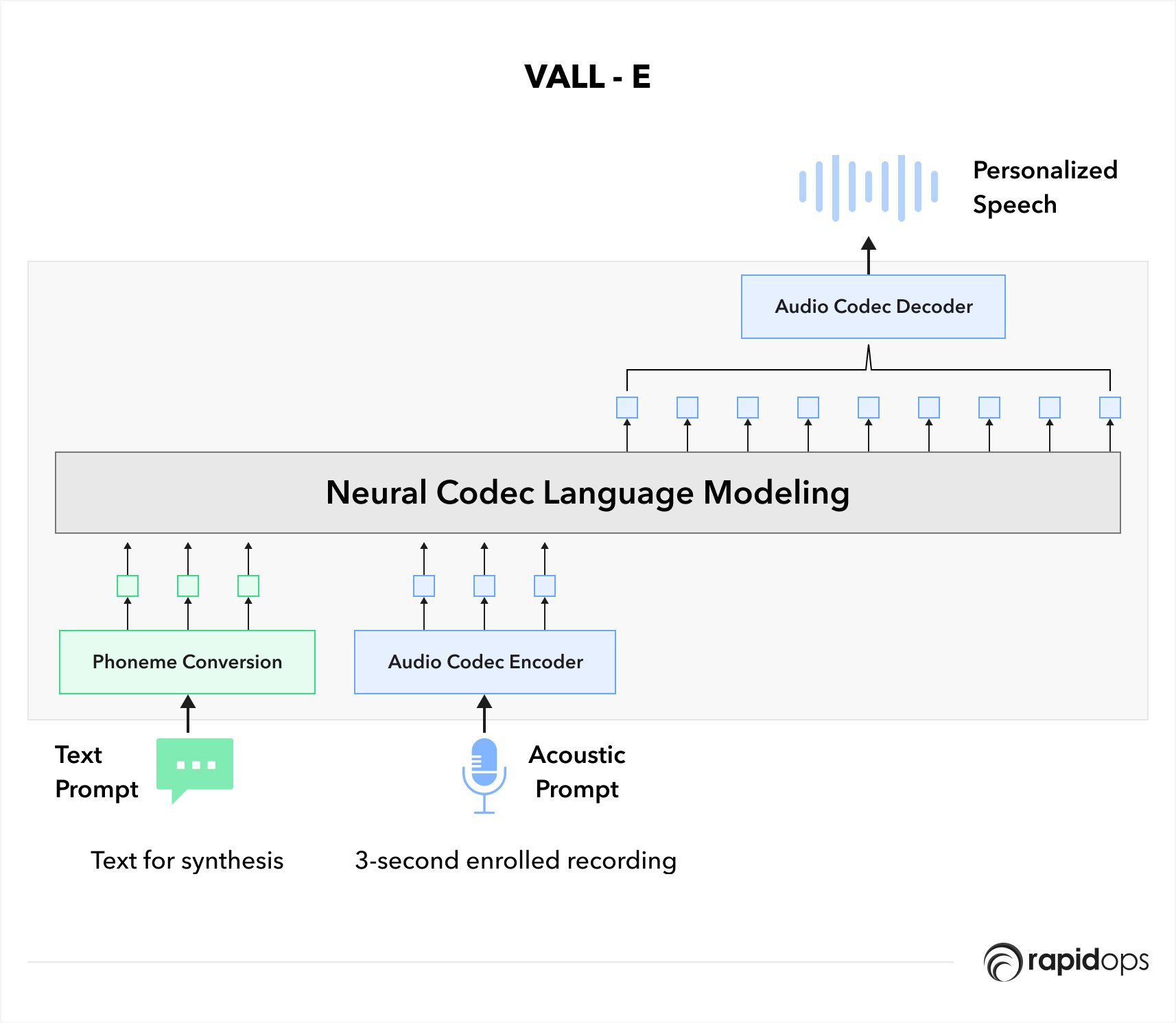VALL-E: A Novel Text-to-Speech Model with Creative Use of Generative Language Models
VALL-E (Voice Activated Language Model for Expressive Speech Synthesis) represents a groundbreaking achievement in neural text-to-speech (TTS) technology developed by Microsoft Research. This article delves into the remarkable technical details, showcasing VALL-E's capabilities in generating high-quality speech without specific speaker training. We also explore its limitations, highlight diverse use cases, and conclude with the potentially transformative impact of VALL-E on the field of speech synthesis.

Technical Details
Powered by a transformer-based neural network comprising an astounding 137 billion parameters, VALL-E has undergone training on an extensive dataset encompassing 60,000 hours of English speech. This extensive training empowers VALL-E to generate exceptional speech quality, imbued with a wide spectrum of emotions, accents, and speaking styles.
Capabilities
- Zero-shot TTS VALL-E is a zero-shot TTS model, meaning it can generate high-quality speech without being specifically trained on a particular speaker's voice. This versatility makes it a powerful tool for speech synthesis tasks.
- Natural and Expressive Speech Leveraging a transformer-based neural network, VALL-E captures long-range dependencies in text-to-speech conversion. This enables it to generate speech that is both natural and expressive, replicating a wide range of emotions, accents, and speaking styles.
Limitations
- Lack of Pre-trained Model As of writing this article, no pre-trained model of VALL-E is available for immediate use. This limitation restricts widespread adoption and hampers the ability to test the model's performance without training it from scratch.
- Complexity of End-to-End Models While VALL-E simplifies speech generation by utilizing generative language models, end-to-end TTS models that directly process text and speech separately remain highly complex. Addressing alignment, speaker identity, and language nuances in these models requires explicit handling, making them challenging to develop and fine-tune.
Use Cases:
- Audiobooks VALL-E unlocks the creation of personalized audiobooks, replicating the styles of beloved actors or narrators and immersing listeners in captivating storytelling experiences.
- E-learning This transformative TTS model enhances educational materials by delivering narration that is natural, engaging, and easily comprehensible, thereby augmenting the learning process.
- Virtual Assistants With VALL-E's ability to produce natural and expressive speech, virtual assistants can communicate with users more convincingly, fostering a seamless and interactive user experience.
- Gaming VALL-E contributes to the creation of immersive gaming environments by providing realistic and lifelike speech synthesis, enhancing the overall gaming experience.
- Telepresence This cutting-edge technology enables the development of telepresence applications that facilitate natural and engaging communication, bridging geographical gaps and enhancing remote interactions.
VALL-E stands as a momentous advancement in the realm of text-to-speech synthesis. Its zero-shot capabilities and the ability to generate natural speech offer unparalleled advantages over traditional TTS systems. While ongoing efforts address challenges such as computational intensity and fine-tuning, the transformative potential of VALL-E cannot be underestimated. Its diverse range of applications, spanning audiobooks, e-learning, virtual assistants, gaming, and telepresence, underscores the profound impact VALL-E can have across multiple industries. As VALL-E continues to evolve, it is poised to revolutionize how we interact with computers, opening up new frontiers of expressive and immersive speech synthesis.
Got questions? We’ve got answers!
How does Microsoft Vall-E work?
How can I access Microsoft Vall-E?
Is Microsoft Vall-E available to the public?



